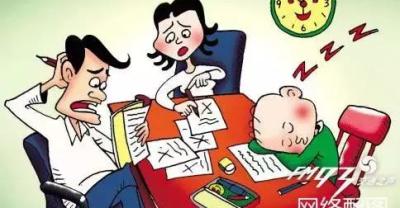The prevention and control method of strawberry root rot with agricultural pesticides! The cause of strawberry root rot!
Author: strawberry planting Alliance
Strawberry root rot
After the occurrence of strawberry root rot, the roots are white. Similar to the symptoms of retting root disease. After being infected by bacteria, the underground root gradually spread from the fibrous root to the branch root and then to the main root, and the color gradually changed to dark brown.
After the disease, the underground root slowly rotted, the initial ground stem had no obvious symptoms, but for a long time without the supply of fertilizer and water from the root, the stem withered and the branches and leaves turned yellow until death.
Wheat, strawberry, Scutellaria baicalensis, Salvia miltiorrhiza, Radix Isatidis, Radix Astragali, Radix Pseudostellariae, Paeonia lactiflora and Codonopsis pilosula are easily infected with the disease.
Second, the main causes of strawberry root rot
Last year, the diseased crops were not completely removed; or because the soil cultivated in the place where the crops were planted was too high, the root system was damaged when the ditches were opened for fertilization or weeding on both sides, or due to Rain Water and irrigation, the amount of water was too large and the drainage was not timely; or lack of light, low temperature and high humidity, soil viscosity was too large, soil caking, poor ventilation; and when the heel system was injured and broken, it was also the most vulnerable to bacteria invasion. Rain Water often suffers from root rot in season.
3. Characteristics of strawberry root rot
Strawberry root rot is caused by Phytophthora. Large amount of water, low-lying areas, lack of ventilation, lack of light, high soil viscosity, root damage and so on are the main causes of bacterial invasion.
After the disease, the root gradually changed from light brown to dark brown. The pathogen remains in the soil for the winter, enters the crops from the above reasons the following year, and spreads through irrigation or rain.
Four. there are some wonderful ways to control strawberry root rot.
Two combinations of agricultural pesticides for the control of strawberry root rot:
1. Agricultural prevention and control methods
① can cause the disease due to a large amount of stagnant water and untimely drainage, so it is necessary to choose relatively flat soil for planting.
② it doesn't matter if the soil in the planting area is uneven, but drainage should be done well to discharge stagnant water, especially in the rainy season.
③ soil viscosity is too high, easy to cause soil caking, easy to cause root underdevelopment.
④ forbids the use of any fertilizer that is not mature, which can easily cause the incidence of diseases.
⑤ nursery bed selection, the best choice of crops to grow seedlings is different from last year's seedbed, that is, to be planted in reverse cropping.
It is also a good choice for ⑥ to choose high quality seeds. High quality seeds can also resist the occurrence of diseases to a great extent.
2. Pesticide control is closely related to carbendazim and metachlorin.
Like other diseases, the prevention and control of root rot by pesticides is first seed disinfection, then soil disinfection, and finally the choice of crop root irrigation drugs.
The seeds of ① were sterilized before planting. It is also the most common first step to reduce the disease.
Seed disinfection dosage: because the seed area is smaller than that of soil medicine. Therefore, seed dressing can use relatively low-level drugs. Carbendazim in 600,800x liquid or carbendazim in 800g / 1000 times liquid
Disinfect the soil before planting ②. The second step is to reduce the disease.
The disinfection of soil is relatively higher than that of seed disinfectant. 1200-1500 times of carbendazim or 1500-2000 times of carbendazim.
Root irrigation was performed after the onset of ③. The third step is the way to reduce the disease.
Root irrigation is similar to soil disinfection, and the application area is larger, so the dosage is the same. 1200-1500 times of carbendazim or 1500-2000 times of carbendazim.
Article source: China Agricultural products Network
Editor: forest trees
- Prev

Li Xiaolu and PG Wan green Jia Nailiang, King Pesticide performed meritorious service again, Ma Huateng became the biggest winner?
Li Xiaolu and Jia Nailiang at the end of 2017, Xiaohua Li Xiaolu and Chinese hip-hop online celebrity tender meat PG one gave the entertainment industry a pleasant surprise.
- Next

It doesn't work. It's a fake pesticide? That's because you didn't do these three things (recommended by good articles)
Some people say that many pesticides do not have any effect, and some people take the blame for "fake medicine" because of their poor efficacy. No.
Related
- Fuxing push coffee new agricultural production and marketing class: lack of small-scale processing plants
- Jujube rice field leisure farm deep ploughing Yilan for five years to create a space for organic food and play
- Nongyu Farm-A trial of organic papaya for brave women with advanced technology
- Four points for attention in the prevention and control of diseases and insect pests of edible fungi
- How to add nutrient solution to Edible Fungi
- Is there any good way to control edible fungus mites?
- Open Inoculation Technology of Edible Fungi
- Is there any clever way to use fertilizer for edible fungus in winter?
- What agents are used to kill the pathogens of edible fungi in the mushroom shed?
- Rapid drying of Edible Fungi

